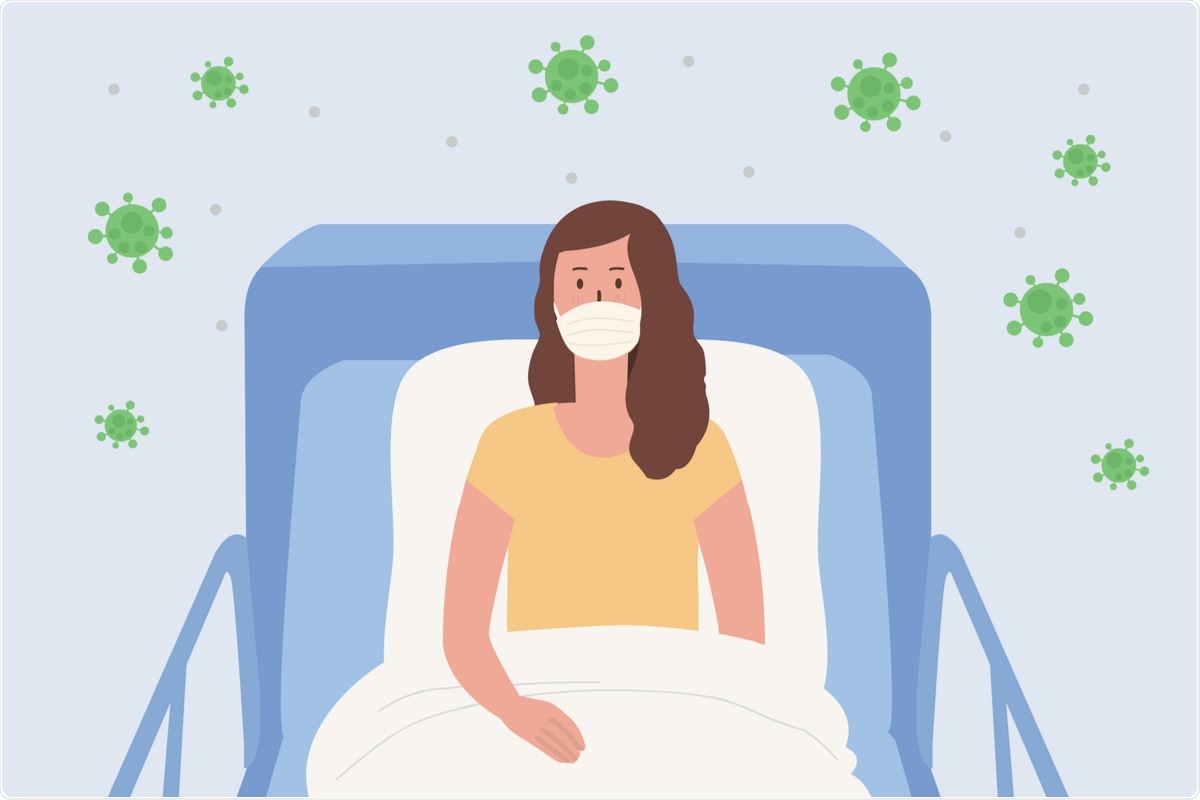Research has found that mutations of genes involved in IFN induction and signaling and the presence of circulating auto-antibodies that can neutralize type 1 IFNs can predispose individuals to significantly more severe coronavirus disease 2019 (COVID-19). While the mere presence of these antibodies does not necessarily mean a serious prognosis, they are present in up to 18% of deceased COVID-19 patients.
 Study: Early and rapid identification of COVID-19 patients with neutralizing type I-interferon auto-antibodies by an easily implementable algorithm. Image Credit: solar22/ Shutterstock
Study: Early and rapid identification of COVID-19 patients with neutralizing type I-interferon auto-antibodies by an easily implementable algorithm. Image Credit: solar22/ Shutterstock

 This news article was a review of a preliminary scientific report that had not undergone peer-review at the time of publication. Since its initial publication, the scientific report has now been peer reviewed and accepted for publication in a Scientific Journal. Links to the preliminary and peer-reviewed reports are available in the Sources section at the bottom of this article. View Sources
This news article was a review of a preliminary scientific report that had not undergone peer-review at the time of publication. Since its initial publication, the scientific report has now been peer reviewed and accepted for publication in a Scientific Journal. Links to the preliminary and peer-reviewed reports are available in the Sources section at the bottom of this article. View Sources
Researchers from the Humboldt-Universität zu Berlin have been investigating the presence of these antibodies in hospitalized COVID-19 patients to examine the potential of using them as a biomarker for severe disease.
A preprint version of the study is available on the medRxiv* server while the article undergoes peer review.
The study
The researchers recruited patients and gathered their data and samples at four sites across Germany. Patients with a maximum WHO score from 3-8 were included in the three main cohorts (A-C). Any patients who had undergone therapeutic plasma exchange to treat hyperinflammatory syndrome caused by COVID-19 were included in cohort D. Healthy control patients were recruited from a separate study.
IFN-AABs were detected using an electrochemiluminescence immunoassay (ECLIA) platform in which MSD GOLD 96-well small spot streptavidin SECTOR plates were washed with buffer and blocked before being left overnight at 4C. The plates were then incubated with IFN-alpha2 or IFN-gamma before being incubated again with diluted sera from the patients. Cytokine AABs were detected using a monoclonal mouse anti-human IgG antibody. Any sera showing IFN levels that exceeded the 97.5th percentile of AAB levels were assessed using unbiotinylated IFN in competition assays, followed by reverse ELISA.
For the virus infection-based neutralization assays, Calu-3 cells were incubated with human serum in the presence of IFN before removing virus inoculum, washing, and incubation with medium, with the cell culture supernatant, analyzed for the presence of viral RNA using RT-PCR.
In total, the scientists gathered 430 serum samples, with a median age of 61 years. Most patients were male. Twenty-seven of those in cohorts A-C suffered from severe disease, while all in cohort D required invasive mechanical ventilation. The proportion of ELISA positive patients in cohorts A-C was 5% for IFN-alpha and 4.2% for IFN-gamma, while in cohort D IFN-alpha was at 18.% and IFN-gamma at 14.8%.
Upon investigating any samples exceeding the 97.5th percentile, they discovered any below this threshold showed very little specificity, and these results were likely due to non-specific binding. Following this, the researchers used the virus neutralization assays to determine the extent to which the IFNs could neutralize the virus. 3.2% and 2.0% of the sera from cohort A-C were able to specifically neutralize IFN-alpha and gamma, respectively, while 18.5% and 11.1% of sera from cohort D showed that same ability.
When investigating the clinical phenotype of IFN-neutralising AAB-positive patients in cohorts A-C, they found no significant differences in clinical baselines, comorbidities, or demographic criteria between positive patients and controls. Still, patients with neutralizing IFN-AABs showed a greater likelihood of suffering from fever and requiring oxygen. These patients also showed earlier onset of symptoms and significantly higher levels of IFN-gamma and IFN-gamma induced protein 10. In general, the presence of neutralizing IFN-AABs was deleterious for the patient, with these individuals requiring more hemodialysis, showing massively increased odds of death (92.3% compared to 19.1%) and a much shorter expected lifespan after entering hospital.
Conclusion
The authors highlight that the presence of IFN-AABs is strongly associated with adverse clinical outcomes. While it is currently not possible to identify these patients before their condition begins to deteriorate, this study could be invaluable for drug developers and researchers trying to identify clinical targets to help support COVID-19 patients. The researchers suggest that these IFNs are likely to present pre-infection or develop very recently after infection. The former is more likely, with 4% of over 70s who have not been infected displaying IFN-AABs. The researchers have developed a diagnostic algorithm that may detect individuals likely to display these antibodies by presenting fever and need for oxygen within a short time following presentation at the hospital. These results could then be confirmed with ELISA, hopefully allowing treatment to begin soon enough to protect those most at-risk.

 This news article was a review of a preliminary scientific report that had not undergone peer-review at the time of publication. Since its initial publication, the scientific report has now been peer reviewed and accepted for publication in a Scientific Journal. Links to the preliminary and peer-reviewed reports are available in the Sources section at the bottom of this article. View Sources
This news article was a review of a preliminary scientific report that had not undergone peer-review at the time of publication. Since its initial publication, the scientific report has now been peer reviewed and accepted for publication in a Scientific Journal. Links to the preliminary and peer-reviewed reports are available in the Sources section at the bottom of this article. View Sources